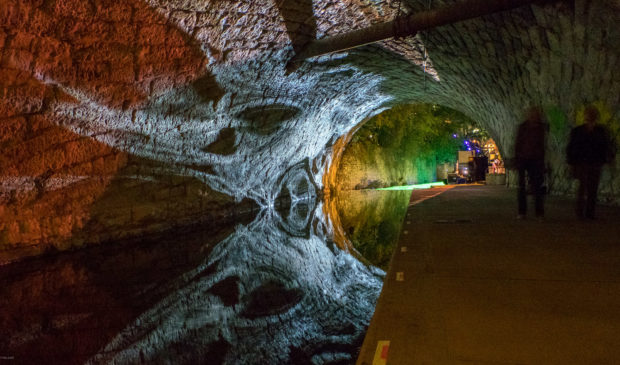More funding, policy work for Waller Creek in 2017
Monday, February 13, 2017 by
Chad Swiatecki With work slated to begin later this year on the biggest of the park improvement projects along Waller Creek, there is expected to be a semi-regular drumbeat of news of new funding and collaboration throughout the rest of 2017.
Peter Mullan, CEO of the Waller Creek Conservancy, which is overseeing an estimated $220 million in improvements of five parks between 15th Street and Lady Bird Lake, told the Austin Monitor that ongoing conversations with developers working near the creek will start to bear fruit soon. The kickoff campaign for large gifts came with a splash last week with the announcement that the Galveston-based Moody Foundation is pledging $15 million to work on Waterloo Park, the northernmost part in the Waller Creek system.
That money is the largest parks-related gift in city history and follows pledges announced in the fall: $10 million from Manchester Financial Group, which is developing the Fairmont Austin hotel, and up to $7 million from the Sutton Company, which is partnering on a 60-story office and residential skyscraper in the nearby Rainey Street district.
Those gifts and other fundraising will help pay for design work on the “Waller delta” section of the project south of Cesar Chavez where the creek originates from the lake, with construction expected to begin next year or in 2019.
Mullan said the extended timetable for the project as a whole comes from the expensive and time-consuming infrastructure work to rebuild the creek that must be completed before other amenities like bridges and trails can take shape. At City Council’s most recent meeting, an approved $1.7 million increase brought the current expected cost of the Waller Creek Tunnel project alone up to almost $163 million.
Mullan said recent outreach efforts like the Creek Show public art exhibition and the annual Palm Park Picnic have helped change the public’s perception of the creek as being barely better than an open sewer and a magnet for the downtown homeless population.
“It’s in bad shape because it’s been neglected for so long and needs a lot of help,” he said. “It’s a drainage ditch and has been treated like that. It’s hard to change perception. Things like the Creek Show tells us how perceptions can change, but for certain folks it can be hard to see how things can be different.”
In addition to private grants, the conservancy is currently using money raised from a 2012 bond issue for the Austin parks system. Also, Mullan said, discussions are underway to amend the creek’s Tax Increment Financing district – initially created to fund development of the Waller Creek Tunnel – so property tax increases in the district could fund “surface improvements” in the five parks.
He said he’s also buoyed by a recent directive from Mayor Steve Adler calling on city staff to work on developing partnerships or agreements that could help ambitious public projects like Waller Creek move forward.
Mullan took over the Waller Creek Conservancy after serving as executive vice president of Friends of the High Line, which transformed an abandoned stretch of New York Central Railroad line in Manhattan to an elevated linear park.
That project has been lauded all over the country, and Mullan said he sees similar potential along Waller Creek. He said the effects will almost certainly lead to increased economic development, though there are some distinct differences between the two.
“This is messier and fuzzier with its surrounding fabric, and you have relationships block by block that you have to manage,” he said, pointing to topographical and building differences at the Cesar Chavez section compared to the Sixth Street section. “There are tentacles stretching out with all the other aspects of the neighborhood, and that’s an advantage.”
Mullan said he realizes that the conservancy’s work is likely to put pressure on the increasingly intense debate about how to best serve the homeless population that congregates near the creek and two of the city’s entertainment districts. Being a part of discussions on that topic is important, he said, but so is maintaining a focus on completing the five parts successfully so they become the best possible community assets.
“We’re trying to create the lens through which people see the place around it,” he said. “Austin has vibrant street life, and we need to continue to serve that. And I hope to see a range of housing in terms of scale and economic opportunity take place. From a design side, you hope developers recognize how they’re participants in the overall neighborhood. And I also would like to see a range of cultural opportunities throughout the district that draw in people from all over the city.”
Photo by Earl McGehee made available through a Creative Commons license.
The Austin Monitor’s work is made possible by donations from the community. Though our reporting covers donors from time to time, we are careful to keep business and editorial efforts separate while maintaining transparency. A complete list of donors is available here, and our code of ethics is explained here.
You're a community leader
And we’re honored you look to us for serious, in-depth news. You know a strong community needs local and dedicated watchdog reporting. We’re here for you and that won’t change. Now will you take the powerful next step and support our nonprofit news organization?



